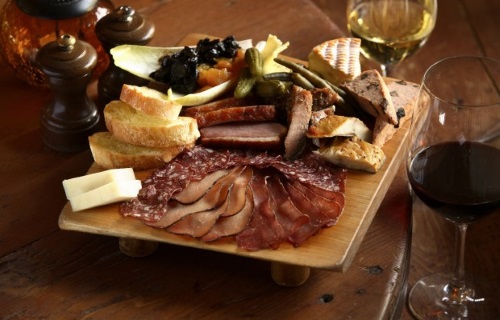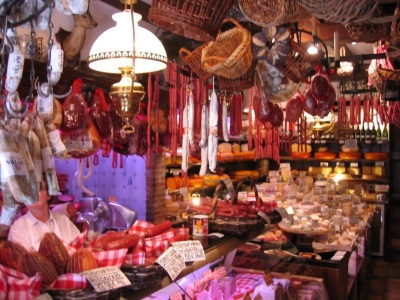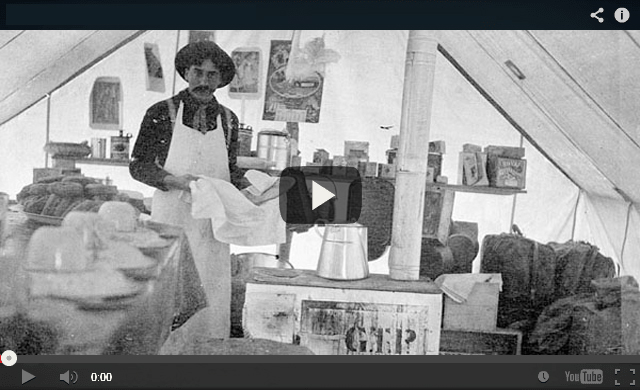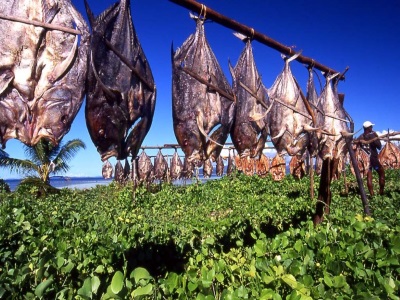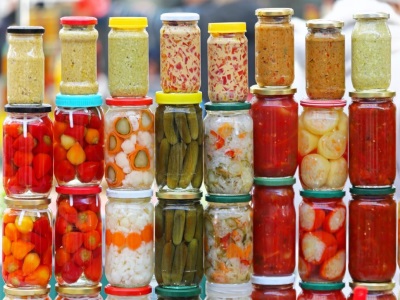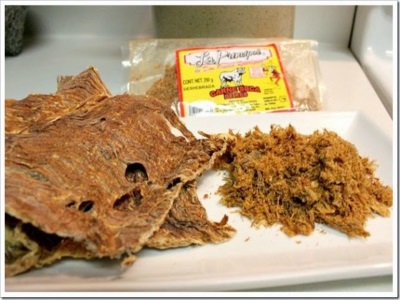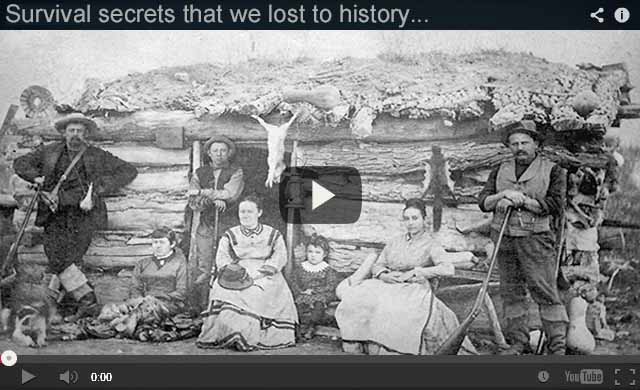Eating Well Off Home Food Preservation
Growing and storing foods is commonly a goal we strive for as we seek self-sufficiency. The easiest and fastest way to store foods is, of course, just dumping it into a root cellar or grain bin or barn, although not everything does so hot with that treatment. Hanging things like corn or onion braids from rafters or digging a pit to keep carrots or potatoes in is pretty close. We’ve been drying slivers and chunks of foods in the air for millennia now. All those methods of food preservation have transcended time pretty easily.
Some methods, however, have been lost along the way, or how we’ve done them has changed drastically – sometimes due to food safety understanding, but sometimes because our modern worlds make something else or another method far easier. Pressure canners and water bath canning aren’t exactly new, but they aren’t really historic methods, either. Folks needed other ways of getting from harvest to harvest once they stopped foraging as nomads, and for a long stretch of time, people were preserving meats, veggies, fruits and even eggs without electricity or refrigeration. Not every way I’ll point out was used extensively or often, nor do they all transfer to all climates or modern times, but some of them do.
Methods for Food Preservation
Canning began during the Napoleonic Wars, but it wouldn’t catch on for home “bottling” for decades, even after tinned foods became more common as luxury items and expeditionary foods. Instead, people continued to depend on their old ways of food storage.
Some general non-canning, non-cellar methods of historic preservation are:
- Dehydrating
- Dry “salting” or salt packing
- Dry “sugaring” or sugar packing (as opposed to sugar syrups)
- Brining
- Cold smoking
- Fat-packing or confit, and
- Fermenting
Sometimes history buffs will say there are five types of historic preservation (Salting, Sugaring, Drying, Fermenting, Confit). Sometimes they say four. Sometimes they’ll count cold smoking meats as its own, sixth category. Sometimes they’ll add in the bairns and caches of foods buried into permafrost, or “normal” cold-storage cellars and buried urns. However we choose to number the “old” methods of preserving fruits, vegetables, and even meats, knowing they’re out there can give us some options. Once we have, there are things like sea biscuits, hard tack or pilot bread or sourdough breads and pemmican that we can learn to make as well to add increased variety and interest and long-term storage to our pantries, even without power or with a busted pressure canned weight.
Dehydration in many forms
A number of the listed methods rely on various aspects of dehydration to do the job of preservation. Drying fruit, vegetables and meat in an electric dehydrator, air, or solar dehydrator is the obvious one.

Plans for smoke shed or smoking drum for meat & fish preservation.
Cold smoking – when we dig a trench or use pipes between a fire and a tent or container to create something like dried fish, mammal jerkies, or dry sausages – also relies on slowly reducing the amount of moisture within our meats. Lowered moisture allows for longer storage.
There are places with drying winds and low enough temperatures, like Alaska, where even large fish are simply split open and allowed to dry in the air. Some First Nations folk still dry their meat and fish that way, and Alton Brown used a couple of air filters and a fan to make jerky (works; I’m too OCD to rely on it). However, being able to enclose it in mesh or a cloth tent to limit insect and dust access, and being able to add smoke to the container or shed will result in a better cure. A salted and even spiced dip for meats or honey-sugar dip for fruits and thin pieces will help increase success.
“Dry packing” or sugaring and salting meats, veggies and fruits also relies on dehydration. In both cases the dry ingredient is thickly layered and packed around cut meats and produce, usually in lidded ceramic pots and kegs in the gallon, half-bushel and bushel sizes. Liquids are leached out of the foods as they sit due to the desiccating nature, and the casks and lidded jars traditionally used regularly require topping off as a result. The salt or sugar and liquids end up slushy, like a gritty river in some cases, after just 4-6 weeks. Changing the salt and sugar out can buy months of storage, and keeping them in a fridge extends the life further, but for a basement or cellar in the 50-60 degree Fahrenheit range, it once regularly bought farmers 8-12 weeks.

Salting fish – Dry packing uses copious amounts of either sugar or salt to preserve foods, but offers an alternative to pressure canning, smoking and jerky.
It takes a lot of a couple of pretty precious resources to do so, however, and it always has. It was also, in the time before canners and jars were middle-class “normal”, one of the few ways colonists and Old World families had near-fresh consistencies with foods. For an alternative to drying meats into jerky especially, it may offer an alternative, especially if a pressure canner is going wonky or jars all have cracked threads and lips and are hard to replace.
Beyond Dehydration
Brining – which usually applies to fish and meats exclusively – does dehydrate meats a little bit, but the salty brine solution in which plates and filets, and sometimes quarters, are submerged really acts as a barrier between the surface of meats and the air, limiting what types of microbes can go to work on our foods, and the salt creates a pH level that inhibits anaerobic microbes as well. It’s similar to the way a sugar solution or pickling brine helps preserve cut fruit in modern water-bath canning. However, in this case, meat is soaked, a super-concentrated solution of salty water is prepared, sometimes with additional spices that aid in flavoring or extending preservation, and foods are submerged and kept in a cool place without heating.
Brining meats

Cold smoking applies to fat-covered hams and bacons, too – even when they’re produced from goose legs – but the dehydration and smoke cure isn’t the main advantage there. It’s the layer of fat that carefully controls the aging (decomposition) process and allows for a storable product. The same holds true for confit meats and veggies like olives – the meat portion is submerged in a liquid fat. The fat itself keep microbes from decaying foods.
The fats in both mean that the storage time is limited by the fat used, since fats do go rancid. However, in the time before pressure canning, confit or fat-packed meats and fat-smeared, smoke-cured meats could add some welcome months, especially since slaughter traditionally took place when it was cool.
RELATED : Canning Your Own Meat Is A Skill You Need To Have
Fermentation
Fermentation is a unique way that people have preserved not only veggies but also fish for centuries – Africa, the Orient, Scandinavia, Western Europe, South Pacific Islands, pretty much everywhere. Salt is needed for the most common types of fermentation, but only in that it creates a condition where the correct microbes can transform sugars to lactic acid. Fermentation using a whey-based activator is actually the root of our “pickled” flavors, although pickling is now done far differently.
In addition to fish, there are traditional dairy products that use fermentation to create a product that stores without refrigeration, although the USDA kind of frowns on it now. Fermentation was also once very, very common as a daily repast – by producing grain beers that were high on calories and lower on alcohol. Beer and wine are great products to develop for the preparedness fold, but they do tend to take some specialized equipment or tools.
The Incredible Edible Egg
Pickled eggs are … okay as snack food, but I’d probably have a hard time convincing my loved ones and one of the dogs that it’s breakfast or dinner. Some of us may have tried whipping eggs, adding water, and spreading them in an Excalibur to dry. Many of us probably know the trick of coating clean eggs (even store-bought eggs) with a light layer of mineral oil and then keeping it in even a 60-65 degree basement for a while. It doesn’t take much oil to do a whole bunch of eggs, and they last upwards of a month or two, especially thick game bird eggs. Still, sometimes it’s interesting and informative to look at how past cultures have stored their eggs.

Preserve eggs with mineral oil.
I’ve run across several that include more than just popping them into a cool basement or cellar in large flats. Clean but not washed eggs (the ones with bloom left on them) are good for even a couple weeks at 65-70 degrees as it is. Everything on the list below progressively adds a couple more weeks of edibility, sometimes a month or so, and was available as a method at least as far back as the Revolutionary War or to when Vikings were making landings. Burying them in casks somewhere cool but where they won’t go through repeated freeze-thaw cycle will add a couple more weeks to any method, and shorten the eggless days for the household.
- Pack in dry salt – Shortest method, but best for flavor and multiple uses; it does dehydrate them and will change the texture over time
- Store in wheat, rye, or oat chaff and bran – Will impart some earthy, musty, and beer-like flavors as time passes
- Oil with rendered suet – Like coating with far cheaper mineral oil, but the ability to create suet isn’t a terrible skill to have; one of the longer-lasting methods, with excellent to okay eating and dog food at 2-3 months and still being about 50-50 human-versus-pig food at 6 months
- Pack in hardwood ash – If you’re okay eating Revolutionary War ash cakes, it’s not bad, but the ash does start to come through in the flavor some after the first month; storage life is similar to melted suet and it does make use of a waste product, which is nice
- Bottle in slake lime – Slake lime was a pretty common product made from limestone or oyster shell and water, but remember: this is the base process for “century” eggs or pidan, those green and brown fermented eggs. While the addition of other ingredients may account for some of the flavor, after 1-2 months, this is as different from a “baking” egg as kimchi is from cabbage.
Historic Food Preservation
Electricity for refrigeration, gas engines, and evolved livestock breeds didn’t just change how we ensure we can eat the same things year round. Some of the biggest advantages to learning the historic methods if we want to unplug as much as possible comes from our ability to store calcium, protein in hard, salted and pressed cheeses, various meats, and block suet.
Dried meat and fermented achara
Learning to make real salt pork and dry sausages can seriously increase a homesteader’s ability to deal with a whole or half steer or their thinned goat, sheep, goose, and pig herds to save feed for breeders come autumn and winter. While some of the methods require copious amounts of precious ingredients like sugar and salt or a fair bit of space, some of them can be used for the same holiday morale boosts they were once treasured for. There are other methods that were used by First Nations tribes, the Scandanavians, Far Eastern and other cultures throughout the world that we can now apply because research is as easy as tapping some keys.
Word of the day: Prepare! And do it the old fashion way, like our fore-fathers did it and succeed long before us, because what lies ahead of us will require all the help we can get. Watch this video and learn the 3 skills that ensured our ancestors survival in hard times of famine and war.
They’ll go into detail on some things that I skim, provide DIY plans, and give some charts for processing and smoking times, and they mention some other methods that I don’t really bring up, like water glassing eggs.
There is one aspect to be highly aware of: During the heyday of a lot of these preservation methods (and home canning) medical diagnoses included “consumption” and “wasting” even once it evolved past spirits and demonic possession. Looking back at history, we’re now laying a lot death and illness at the doorstep of fecal-oral route microbes, fungi, and other foodborne illnesses. Research the risks and methods, and prepare for supportive care and good hygiene, because those are likely to be major factors in surviving and thriving should we face a major calamity.
Discover how to survive: Most complete survival tactics, tips, skills and ideas like how to make pemmican, snow shoes, knives, soap, beer, smoke houses, bullets, survival bread, water wheels, herbal poultices, Indian round houses, root cellars, primitive navigation, and much more at: The Lost Ways
The Lost Ways is a far-reaching book with chapters ranging from simple things like making tasty bark-bread-like people did when there was no food-to building a traditional backyard smokehouse… and many, many, many more!
Here’s just a glimpse of what you’ll find in The Lost Ways:
From Ruff Simons, an old west history expert and former deputy, you’ll learn the techniques and methods used by the wise sheriffs from the frontiers to defend an entire village despite being outnumbered and outgunned by gangs of robbers and bandits, and how you can use their wisdom to defend your home against looters when you’ll be surrounded.
Native American ERIK BAINBRIDGE – who took part in the reconstruction of the native village of Kule Loklo in California, will show you how Native Americans build the subterranean roundhouse, an underground house that today will serve you as a storm shelter, a perfectly camouflaged hideout, or a bunker. It can easily shelter three to four families, so how will you feel if, when all hell breaks loose, you’ll be able to call all your loved ones and offer them guidance and shelter? Besides that, the subterranean roundhouse makes an awesome root cellar where you can keep all your food and water reserves year-round.
From Shannon Azares you’ll learn how sailors from the XVII century preserved water in their ships for months on end, even years and how you can use this method to preserve clean water for your family cost-free.
Mike Searson – who is a Firearm and Old West history expert – will show you what to do when there is no more ammo to be had, how people who wandered the West managed to hunt eight deer with six bullets, and why their supply of ammo never ran out. Remember the panic buying in the first half of 2013? That was nothing compared to what’s going to precede the collapse.
From Susan Morrow, an ex-science teacher and chemist, you’ll master “The Art of Poultice.” She says, “If you really explore the ingredients from which our forefathers made poultices, you’ll be totally surprised by the similarities with modern medicines.” Well…how would you feel in a crisis to be the only one from the group knowledgeable about this lost skill? When there are no more antibiotics, people will turn to you to save their ill children’s lives.
If you liked our video tutorial on how to make Pemmican, then you’ll love this: I will show you how to make another superfood that our troops were using in the Independence war, and even George Washington ate on several occasions. This food never goes bad. And I’m not talking about honey or vinegar. I’m talking about real food! The awesome part is that you can make this food in just 10 minutes and I’m pretty sure that you already have the ingredients in your house right now.
Really, this is all just a peek.
The Lost Ways is a far–reaching book with chapters ranging from simple things like making tasty bark-bread-like people did when there was no food-to building a traditional backyard smokehouse… and many, many, many more!
Books can be your best pre-collapse investment.
The Lost Ways (Learn the long forgotten secrets that helped our forefathers survive famines,wars,economic crisis and anything else life threw at them)
Survival MD (Best Post Collapse First Aid Survival Guide Ever)
Conquering the coming collapse (Financial advice and preparedness )
Liberty Generator (Build and make your own energy source)
Backyard Liberty (Easy and cheap DIY Aquaponic system to grow your organic and living food bank)
Bullet Proof Home (A Prepper’s Guide in Safeguarding a Home )
Family Self Defense (Best Self Defense Strategies For You And Your Family)
Survive Any Crisis (Best Items To Hoard For A Long Term Crisis)
Survive The End Days (Biggest Cover Up Of Our President)
Drought USA (Discover The Amazing Device That Turns Air Into Water)
SOURCE : theprepperjournal.com

